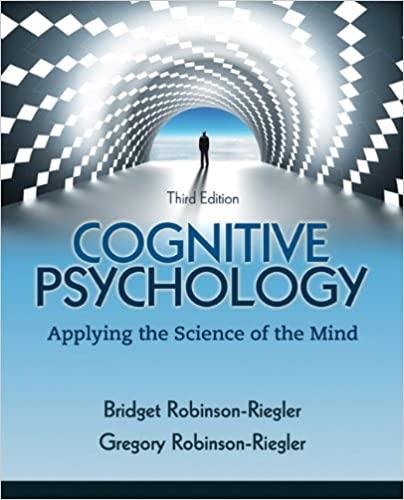Answered step by step
Verified Expert Solution
Question
1 Approved Answer
chrome-extension://efaidnbmnnnibpcajpcglclefindmkaj/https://leocontent.umgc.edu/content/dam/course-content/tus/psyc/psyc-495/document/artificial_sanity.pdf Study 2: Artificial Sanity Artificial Sanity by Sheila O'Brien Quinn. Case copyright held by the National Center for Case Study Teaching in Science, University
chrome-extension://efaidnbmnnnibpcajpcglclefindmkaj/https://leocontent.umgc.edu/content/dam/course-content/tus/psyc/psyc-495/document/artificial_sanity.pdf
Study 2: Artificial Sanity
Artificial Sanity by Sheila O'Brien Quinn. Case copyright held by the National Center for Case Study Teaching in Science, University at Buffalo, State University of New York. Originally published June 23, 2005.
- Discuss two accepted models of mental illness, i.e., psychological, biological, behavioral. What assumptions are made within the models? How do they differ?
- How do these two different models influence the treatment of people with mental disorders?
- Tell the class the history of the present case. What does "right to treatment" entail for Singleton? Does Singleton have schizophrenia, in your opinion?
- What are the assumptions about mental illness held by Singleton's lawyer and the prosecutor? Support your answer with direct quotes from each lawyer.
- Each lawyer appears to believe in a different model of mental illness. What model is each lawyer using to support his/her argument about how Singleton should be treated?
- What is artificial sanity? Argue your personal side of the case.
Step by Step Solution
There are 3 Steps involved in it
Step: 1

Get Instant Access to Expert-Tailored Solutions
See step-by-step solutions with expert insights and AI powered tools for academic success
Step: 2

Step: 3

Ace Your Homework with AI
Get the answers you need in no time with our AI-driven, step-by-step assistance
Get Started


